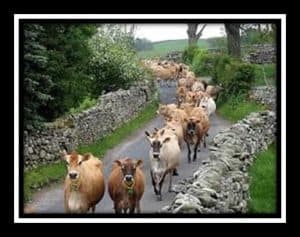
This is the third and final post based on questions Tom uses when he is analyzing a herd for potential weakness and areas for improvement. This entry focuses on the lactating cow group.
Tom’s Reasons for asking these specific questions.
General comments: you may wonder why I haven’t asked numbers like milk production and components, cull rate, conception rate, etc. These values are all outputs of what your dairy is doing. By looking at these values, we only know the surface and not how things are working internally (or if you are profitable). The questions that have been posed are at a level where we can evaluate the various systems within the dairy; many represent critical control points. If the answers you give to these questions fall within our guidelines, milk and reproduction tend to be good.
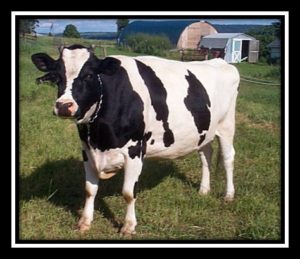
1. What are dry matter intakes by pen?
2. What is weight at calving of cows by lactation number?
3. For every 100 cows that calve, how many:
a. die in the first 30 days?
b. die from 30 – 60 days in milk?
c. are sold in the first 30 days?
d. are sold between 30 and 60 days in milk?
4. What is the calving interval?
5. What is the incidence of lameness (lameness score 3 or higher)?
6. What is feed bunk space per cow?
7. Are feeds analyzed and diets formulated by a nutritionist at least monthly?
Feeding
1. Is a feed management program used?
Lactating Herd
1. What are dry matter intakes by pen?
a. These are some of the most difficult values to obtain on-farm. Many times, as a nutritionist, we must try and work backwards from either known milk of a group or expected milk of a group (if daily milk weights are not available). We must then ask if milk is being held back by an intake limitation or if cows are ‘overeating’. Feed is the most expensive component of producing milk (or gain) so to accurately, and at the best economic level, to formulate, we must know intakes. Some may say ‘simply use the predicted intakes’. These are only a guideline as the best intake equation only accounts for about 80% of the variation. And, all intake equations rely primarily on two data inputs: bodyweight and fat corrected milk. We then apply adjustments for environment, but even then we are still missing large formulation and decision making opportunities.
2. What is weight at calving of cows by lactation number?
a. In addition to growth requirements, ration formulation systems all require body weight as an input to calculate animal requirements. If, as a nutritionist, I am off 45 kg on body weight, the predicted DMI will be off 1 kg and the maintenance energy requirements will be off 10%. Today’s cows are much bigger than they were 20 years ago! If I were to have one body weight on a cow, her weight at calving is the best one. Ideally, install in-line scales and weigh every cow every milking. Farms that have these systems find they can isolate sick cows 2-3 days earlier because the weights go down from the cow NOT DRINKING and they can intervene earlier.
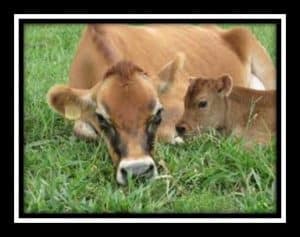
3. For every 100 cows that calve, how many:
a. die in the first 30 days?
b. die from 30 – 60 days in milk?
c. are sold in the first 30 days?
d. are sold between 30 and 60 days in milk?
a. cattle that leave the herd within the first 60 days in milk represent (with a few exceptions) major losses on dairy farms. We all know of (and do this) that cow that was dried off early or may have other issues but she is pregnant and we keep her for a heifer calf (which usually means we end up getting either a dead calf or a bull calf) and then sell the cow post-calving. These are the exceptions to the rule though! Losing a cow at this stage of the productive cycle, especially if she dies, is a complete loss of income from that lactation and the value of the cull cow. Less than 5% of fresh cows should be sold or die during the first 60 days. Herds less than 1,000 cows need to evaluate these numbers quarterly or twice annually as this value can shift drastically due to various events. In addition to typical post-calving metabolic disease, these values will tell us about the overall transition phase, calving difficulty, lameness, etc. Regardless, records from individual animals that were sold or died need to be evaluated to look for the root cause. We know that at times, just random events cause a monthly spike. We also know that when we evaluate these events, we must be discussing with the manager/owners what changed/occurred two to six months previously.
4. What is the calving interval?
a.Tthere are a lot of ways to look at reproductive success in a herd. And there are a lot of ways that these values vary within farm based on how the question is asked, cull rates, bST use, etc. In the end though, the calving interval tells us a fair amount about heat detection, conception rates, nutrition, and more. 12.5 to 13.5 months would still be the acceptable range but 12.8-13.0 more desirable based on observations.
5. What is the incidence of lameness (lameness score 3 or higher)?
a. For many farms, the answer will be “we don’t know” or “low”. In reality, on many farms it is >20% and has been observed to be >50%. This can be influenced by cow comfort, nutrition, hoof trimming style and frequency, and a whole host of other variables. The generally accepted goal is to have <15% score 3 or greater.
6. What is feed bunk space per cow?
a. Bunk space and feeding frequency directly affect eating time and meal patterns. Over-stocking (<45 cm/c feed bunk space) will alter eating behavior. Total DMI may not change but the meal size, number of meals, eating rate, and total eating time all are altered. This affects nutrient utilization, rumen pH, cow health (acidosis), lameness, resting time, etc. and will directly influence milk volume, components, reproduction, etc.
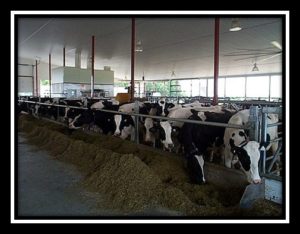
7. Are feeds analyzed and diets formulated by a nutritionist at least monthly?
a. Let’s start with dry matters on silages. Statistically, to maintain control of the diet, feeds in bunk silos should be measured for dry matter 3-5 times per week, bagged silages 1-4 times per DAY, and upright silos 3-5 times per week. As for standard analysis and formulation: feeds change all the time. Even corn silage all from one field will vary 10-20% in NDF depending on where in the field, soil fertility, etc. And no, simple mixing in the silo does NOT make this variance go away. In an ideal world, diets would be evaluated and updated weekly if not more frequently! This is how you can maintain milk per cow variability of less than 100 ml!
Feeding
1. Is a feed management program used?
a. From our experience, shrink is not the birds or the wind. It is the feeder overfeeding ingredients. I as a nutritionist can formulate to the nearest mg but without a feed management program, the potential for over- or under-feeding is very high. Additionally, it makes the feeders’ job easier as they do not have to try to make math adjustments on the fly. They can focus on doing the best job they can. Not to mention the ability to track inventory, project needs, etc.
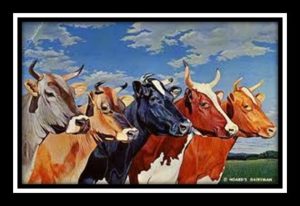
By focusing on these questions and the ones explained in the previous posts on replacement animals and dry cows, you can be a long way towards understanding the factors that weigh on the productivity and health of your clients’ farms.
